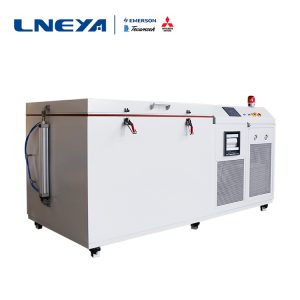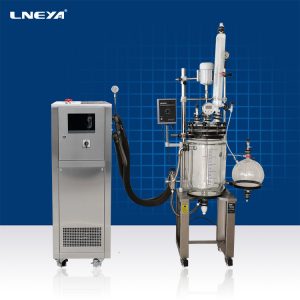Operating Instructions For the Low Temperature Test Chamber
En low temperature test chamber is a necessary test equipment in aviation, automobile, household appliances, scientific research and other fields. It is used to test and determine the parameters and performance of electrical, electronic and other products and materials after the temperature environment changes in high temperature, low temperature, or constant test.
En low temperature test chamber can be used to check and determine the temperature cycling changes of electrical, electronic products or materials, and produce the adaptability of storage and use under environmental conditions. The equipment adopts forced air circulation to maintain the uniformity of temperature in the working room, with green environmental protection, micro-computer control, temperature digital display, adjustable temperature in the box, high-density insulation layer, good insulation effect, energy saving.
En low temperature test chamber should never be used for testing the following objects or those containing them:
(1) Explosives:
1. Nitroglycol (ethylene glycol dinitrate), nitroglycerin (propylene glycol trinitrate), nitrocellulose and other explosive nitrates.
2. Trinitrobenzene, trinitrotoluene, trinitrophenol (picric acid) and other explosive nitro compounds.
3. Peracetic acid, methyl ethyl ketone peroxide, benzoyl peroxide and other organic peroxides.
(2) Combustibles:
1. Spontaneous combustion:
Metals: lithium, potassium, sodium, yellow phosphorus, phosphorus sulfide, red phosphorus.
Cerules: calcium carbide (calcium carbide), phosphatized lime, magnesium powder, aluminium powder, sodium bisulfite.
2. Categories of oxide properties:
(1) Potassium chlorate, sodium chlorate, ammonium chlorate and other chlorates.
(2) Potassium peroxide, sodium peroxide, ingot peroxide and other peroxide salts.
(3) Potassium peroxide, sodium peroxide, barium peroxide and other inorganic peroxides.
3. Flammables:
(1) Ether, gasoline, propylene oxide, carbon disulfide and other substances whose ignition point is less than – 30 C.
(2) Common ethane, oxidized alkene, acetone, benzene, methyl ethyl ketone and other substances whose ignition point is above – 30℃ but below 0℃.
4. Flammable gases:
Hydrogen, acetylene, ethylene, methane, ethane, propane, butane and other gases that may burn at 1 atmospheric pressure at 15 C.
Recomendaciones relacionadas
-
Chemical process is inseparable from temperature control
856Chemical process is inseparable from temperature control
Ver detalles -
High-power industrial refrigerator evaporator maintenance precautions
1044High-power industrial refrigerators are used in industrial cold processing. Evaporators in high-power industrial refrigerators are one of the most important components and one of the factors affecting the cooling effect of high-power industrial re...
Ver detalles -
High and low temperature humidity test chamber performance
12631. It has wide temperature control range, which can meet the needs of users.2. With a unique balanced temperature control method, with stable and balanced heating capacity, high precision and high stable temperature control can be carried out;The ...
Ver detalles -
Benefits of using heating and cooling equipment in the laboratory
1144Laboratory heating and cooling equipment (also known as: cold and heat integrated machine, refrigeration and heating cycle device) is a device that integrates cooling and heating, heating and cooling can be quickly converted, and the same medium (...
Ver detalles
 LNEYA Enfriadoras industriales Fabricante Proveedor
LNEYA Enfriadoras industriales Fabricante Proveedor













